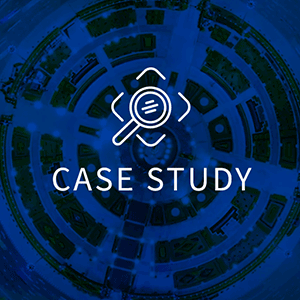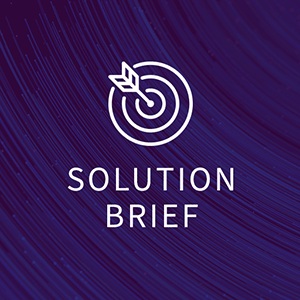Many federal agencies now have software inventories. But where are the savings? The answer is in the data.
For years, federal agencies have struggled to effectively manage their sprawling software estates. Given that agencies typically spend more than $6 billion a year on software, the cost of mismanagement can be considerable.
Unexpected costs come in the form of software that’s either overutilized, when agencies pay vendors additional money for overstepping the terms of their licenses, or underutilized, in which case agencies have purchased software that’s left on the shelf.
The Government Accountability Office (GAO) first reported on this problem in 2014. Some progress has been made since then:
- The Office of Management and Budget in 2016 directed agencies to centralize oversight of their software purchasing and usage, assemble agency-wide software inventories and identify cost-saving opportunities.
- Congress passed the Making Electronic Government Accountable by Yielding Tangible Efficiencies (MEGABYTE) Act of 2016, requiring CIOs to establish software licensing policies and inventories.
- Lawmakers included software asset management (SAM) as one of several IT management categories for which federal agencies would be graded twice a year under the Federal IT Acquisition Reform Act (FITARA).
These efforts are showing promise. A December 2018 GAO assessment found that agencies made some gains in assembling software inventories, as well as installing better software license policies and practices.
But they have much more to do. The concern today is agencies still fail to realize the enormous cost savings and other benefits these directives are anticipating, even though they are complying better with SAM directives.
Current directives require agencies to create comprehensive and regularly updated inventories of their software licenses. Then they have to use those inventories to make management decisions and save money. More agencies are doing that. But they still confront two fundamental problems: poor inventory data and an inability to understand and manage their licensing terms.
1. Poor inventory data
The inventory data on which agencies rely is often fraught with inaccuracies, duplication, inconsistencies and incompleteness. The reliance on numerous infrastructure tools to gather software asset data results in a hodgepodge of software inventory data that must be painstakingly reconciled, normalized, deduplicated and made consistent.
Agencies don’t have the time or staff to do that, so they end up with software asset inventories that lack critical information, such as specific versions of software assets. A single software asset may be referred to by many different naming conventions — in some cases hundreds — resulting in highly distorted views of an agency’s inventory.
It is not enough to assemble an agency-wide software asset inventory. That inventory must be complete, accurate, normalized and deduplicated in order to effectively and efficiently support management decisions that will produce tangible cost-saving results.
Even without high-quality software asset data, agencies could still be compliant with software directives. But they’ll continue to lose money through wasteful practices. The potential costs could be significant, considering that one major federal agency reported saving $181 million just by consolidating its enterprise license agreements, according to the GAO.
2. Poor understanding of their licensing terms
Software comes with many complicated terms and conditions. There are upgrade and downgrade rights, second use rights and special terms for using software in backup, test, development and production environments. When an agency purchases a software package, it’s entitled to use that software up to a certain amount. But consumption of that software varies considerably depending on what hardware it runs on. Similarly, product use rights vary widely from one software package to the next.
Getting a working understanding of those terms and conditions for all software assets across the enterprise may seem impossible. Some agencies simply have no idea how well they’re abiding by their software terms until software publishers conduct periodic true-up audits that inform them of whether and to what extent they’ve exceeded their licensing terms. And then they pay the bill.
Agencies in this situation are exposed to potentially millions of dollars in unanticipated software audit charges. Moreover, they’re incapable of effectively governing, optimizing and enforcing their software estates.
The costs of ineffective software management take the form of missed savings opportunities, as well as wasted staff resources. Tens or hundreds of hours of staff time are typically spent conducting manual data calls to prepare for internal or vendor audits to ensure that software usage adheres to what is licensed.
Flexera’s FlexNet Manager solution was designed to provide enterprises with high-quality, comprehensive data that offers actionable insights for efficient, enterprise-scale software asset management. Flexera’s FlexNet Manager Suite for Enterprises employs robust automation and business intelligence to clearly and easily inform asset managers exactly where they’re underutilizing and overutilizing software assets, arming them with the data they need for the next software audit.
These capabilities enable agencies to not only know their inventories of software assets and their associated licensing terms but to effectively optimize, govern and enforce their software estates so they can realize meaningful cost savings.
IT Asset Management
It all starts with knowing what’s in your IT ecosystem. Flexera One discovers even the most elusive assets whether on-prem, SaaS, cloud, containers and more.
Industry analyst firm Gartner scored FlexNet Manager Suite for Enterprises highest among all SAM vendors for its ability to perform intermediate SAM functionality and advanced SAM functionality use cases. (Intermediate SAM is typically for medium to large organizations, while advanced SAM is for large enterprises with challenging licensing requirements.)
What’s more, FlexNet Manager Suite for Enterprises provides agencies visibility and control of their entire software state to better optimize software spend, which Gartner estimates could save enterprises up to 30 percent. This means agencies can help fund other strategic business initiatives, such as cybersecurity and IT service management, without having to increase their overall IT budgets.
One other thing: customers love us. Flexera was named a Gartner Peer Insights Customers’ Choice for Software Asset Management Tools in 2018 and 2019.







